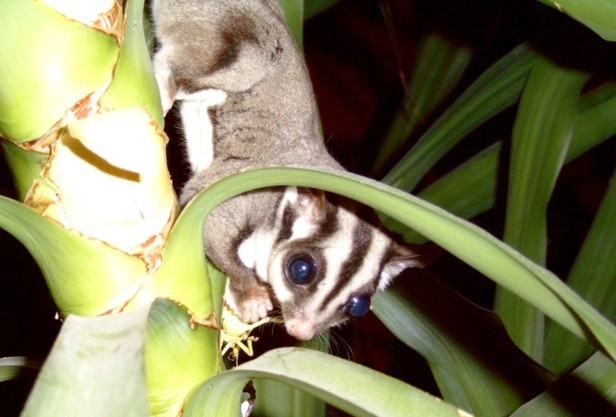
Sugar Glider
Overview
The sugar glider (Petaurus breviceps) is a small, nocturnal marsupial native to Australia, New Guinea, and parts of Indonesia. It is known for its ability to glide through the air using a membrane of skin that stretches from its forelegs to hindlegs.
Identification
Sugar gliders are lightweight, typically weighing between 100 and 160 grams. They have a soft, grayish fur with a distinctive black stripe running from the nose to the mid-back. Their large eyes aid in night vision, and their long, partially prehensile tail helps with steering while gliding.
Habitat and Distribution
They inhabit forests, woodlands, and rainforest edges, where tree canopies provide the vertical space needed for gliding. Sugar gliders build nests in tree hollows and live in small social groups.
Feeding and Pollination
Omnivorous in nature, sugar gliders feed on tree sap, nectar, pollen, insects, and small vertebrates. Their feeding behavior, particularly on nectar and pollen, makes them incidental pollinators of various flowering plants, contributing to forest regeneration and ecosystem diversity.
Gliding Behavior
They can glide distances of up to 50 meters or more, which they use to travel between trees in search of food or mates. The gliding membrane, known as the patagium, stretches from wrist to ankle and helps them avoid ground predators.
Reproduction and Life Cycle
Breeding can occur year-round in favorable conditions. After a gestation of about 15–17 days, the tiny, underdeveloped joey crawls into the mother’s pouch, where it continues to grow for around two months. Sugar gliders may live up to 10–12 years in captivity and slightly less in the wild.
Conservation
While sugar gliders are not currently considered threatened in their native range, they are vulnerable to habitat destruction and predation by introduced species such as cats and foxes. They have also become popular in the exotic pet trade, which raises ethical and ecological concerns.
